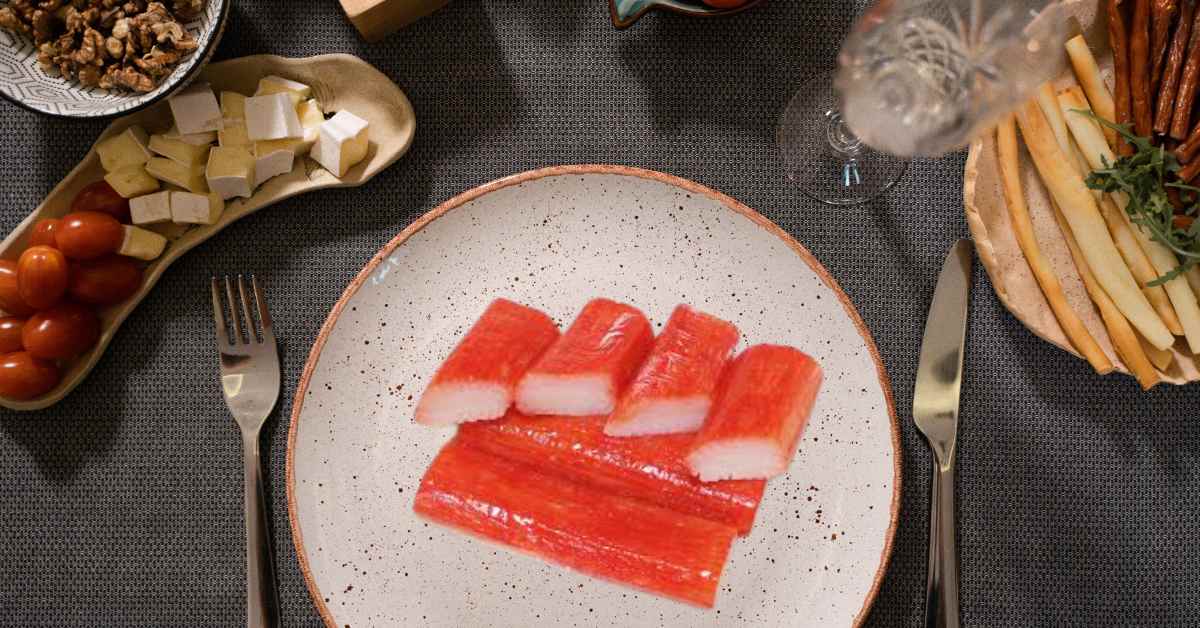It is also known as imitation crab meat, has become a widely used ingredient in various recipes. Its affordable nature and versatility make it a popular choice for those looking to mimic the taste and texture of real crab meat. In this article, we’ll explore its origins, nutritional value, and how it is used in various dishes worldwide.
What is Kanikama?
A Seafood Substitute with Japanese Roots
It is also known as surimi, is a processed seafood product that imitates the flavor and texture of crab. The name is a combination of “kani” (crab) and “kama” (from “kamaboko,” a type of fish cake). It’s primarily made from white fish, such as pollock, which is finely ground and combined with starch, egg whites, and flavorings to create an imitation crab product.
Origins of Kanikama
It was first developed in Japan in the 1970s. Although it was initially intended to replicate jellyfish, the result was a product that more closely resembled crab. Due to its low cost and crab-like qualities, it quickly gained popularity in Japan and eventually spread globally, particularly to the United States.
How Kanikama is Made
The Surimi Process
It begins with surimi, a paste made by washing white fish to remove fat and leave behind the proteins. They then mix this paste with starches, flavorings, and sometimes crab extract for a more authentic taste. They shape the mixture into sticks or chunks and cook it, giving it a texture and appearance similar to crab meat.
Nutritional Aspects of Kanikama
Nutritional Information
Kanikama offers a low-calorie, low-fat option for those who enjoy seafood-like flavors. A typical 100-gram serving of the includes:
- Calories: ~95 kcal
- Protein: 7 grams
- Fat: 0.5 grams
- Carbohydrates: 15 grams
- Sodium: 600-800 mg (varies by brand)
Health Considerations
While kanikama is low in calories and fat, it’s important to remember that it is a processed food. This means it contains artificial flavorings, preservatives, and relatively high levels of sodium. It can be a healthy part of a diet when eaten in moderation, but fresh seafood offers more natural nutrients, such as omega-3 fatty acids.
Popular Dishes Featuring Kanikama
Sushi Rolls
It is a key ingredient in sushi rolls, particularly in the famous California roll. Its mild sweetness complements avocado, cucumber, and rice, making it a go-to for sushi lovers.
Seafood Salads
In many countries, people use it in seafood salads, mixing it with mayonnaise, celery, and seasonings to create a light and flavorful dish. They can serve this type of salad as an appetizer or a main course.
Crab Cakes
It is a popular alternative to real crab meat in crab cakes. It maintains a similar texture and flavor, making it an affordable option without sacrificing taste.
Spring Rolls and Rice Wraps
It is often used in spring rolls and rice wraps, adding a seafood element to these fresh, vegetable-filled dishes. It pairs well with dipping sauces commonly served with wraps.
Kanikama in Asian Cuisine
Japanese Cuisine
In Japan, kanikama is used beyond sushi. It can be found in hot pots, soups, and even bento boxes. Its convenience and affordability make it a favorite ingredient in home-cooked meals.
Korean Cuisine
In Korean cuisine, people commonly use it in dishes like gimbap (Korean sushi rolls) and salads. They sometimes stir-fry it with vegetables to create side dishes.
Chinese Cuisine
In Chinese cuisine, it is sometimes used in dim sum or seafood dumplings. It also occasionally appears in stir-fries, providing a crab-like flavor without the expense of real crab.
Cooking with Kanikama at Home
Using Kanikama in Cold Dishes
Since it is pre-cooked, you can add it directly to cold dishes without any extra preparation. It’s perfect for salads, rice bowls, and wraps, where you can shred and mix it with other ingredients.
Using Kanikama in Hot Dishes
You can also add kanikama to soups, stir-fries, or baked dishes. Since it’s already cooked, you only need to heat it briefly. It works well in hot pots or alongside vegetables in quick stir-fries.
Baking with Kanikama
It can be included in baked dishes like crab casseroles or seafood lasagnas. It holds up well in the oven and absorbs the flavors of the surrounding ingredients, making it a versatile option for baked seafood recipes.
Kanikama vs. Real Crab
Flavor Differences
While it closely mimics the taste of crab, it is generally milder and slightly sweet. It lacks the briny flavor that real crab provides, but for many dishes, it offers an acceptable substitute.
Cost
It is significantly more affordable than real crab meat, which makes it a popular choice for budget-conscious consumers.
Nutritional Comparison
Real crab meat is much richer in nutrients than kanikama. It contains higher levels of protein, omega-3 fatty acids, and essential vitamins and minerals, making it a better choice for those looking for more nutrient-dense options.
Where to Buy Kanikama
Kanikama is widely available in most grocery stores, particularly in the seafood section. It can also be found in Asian markets, where it may be labeled as “surimi” or “imitation crab.”
Shopping Tips
When buying kanikama, check the ingredients for quality. Look for products made from real white fish, with fewer artificial additives. Unopened packages can last in the freezer for several months, but you should consume opened packages within a few days.
Sustainability of Kanikama
Is Kanikama Eco-Friendly?
Kanikama is often made from white fish, such as pollock, which is considered a more sustainable choice than crab. Surimi production also uses fish parts that might otherwise go to waste, contributing to better resource management. However, consumers should look for brands that practice sustainable fishing and use eco-friendly packaging.
Conclusion: Why Kanikama is Worth a Try
Kanikama is a versatile, affordable alternative to real crab meat, making it an ideal ingredient for sushi rolls, salads, and hot dishes. While it’s important to note that it is a processed food, it can be a valuable part of a balanced diet when eaten in moderation. Whether you’re looking to save money or try a new seafood substitute, it is a convenient and flavorful option worth exploring in your next recipe.









